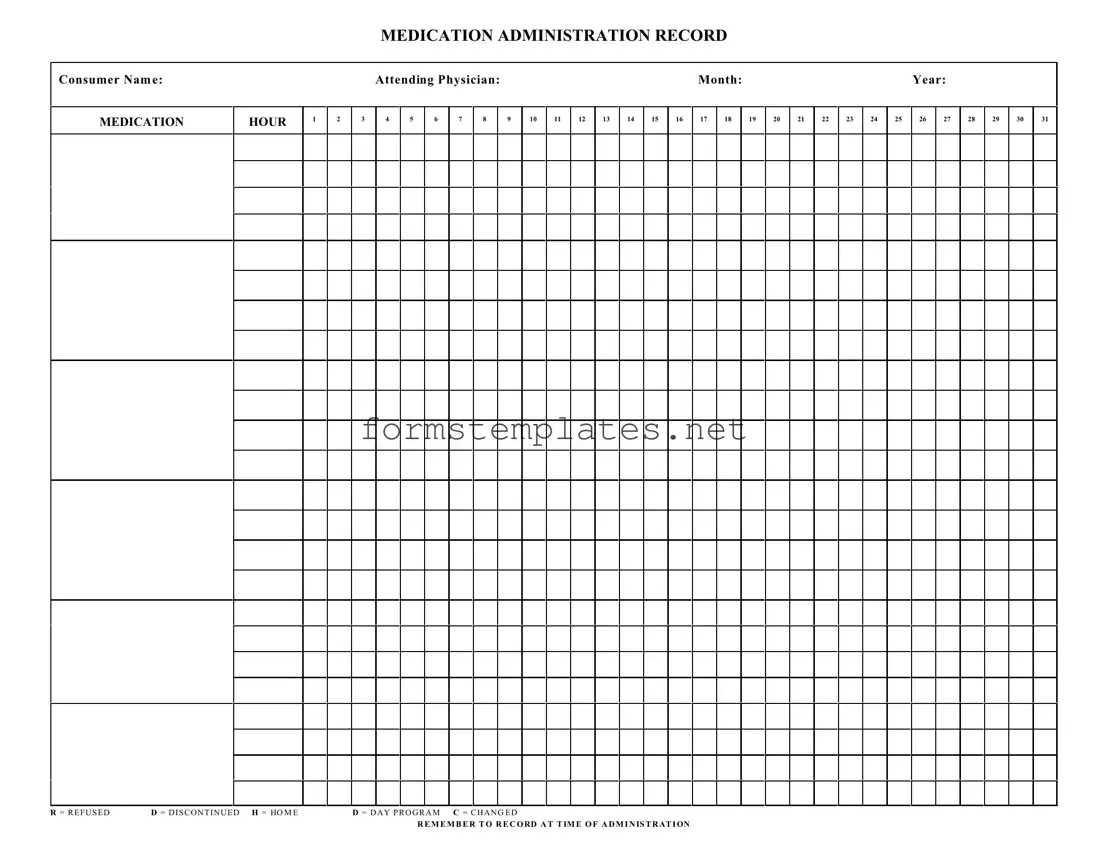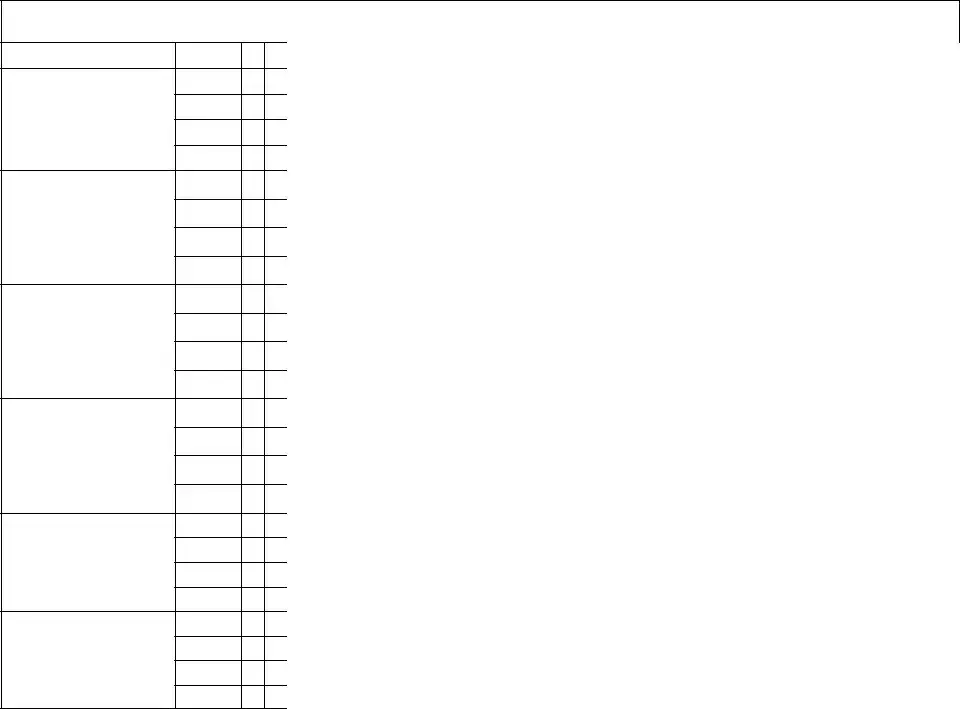The Medication Administration Record Sheet, often referred to as the MAR, is a crucial tool in the healthcare setting, designed to ensure that patients receive their medications accurately and safely. This form includes essential details such as the consumer's name and the attending physician's information, fostering clear communication among healthcare providers. It is organized by month and year, allowing for easy tracking of medication administration over time. The sheet features designated hours for each day, where healthcare staff can log the administration of medications, as well as any refusals, discontinuations, or changes in the medication regimen. Symbols like "R" for refused, "D" for discontinued, and "C" for changed serve as quick references to convey important information about a patient's medication status. It is vital to remember that recording the exact time of administration is not just a procedural step; it is an essential practice that helps maintain patient safety and ensures compliance with medical guidelines. By utilizing this form effectively, healthcare providers can enhance patient care and maintain accurate medical records.

